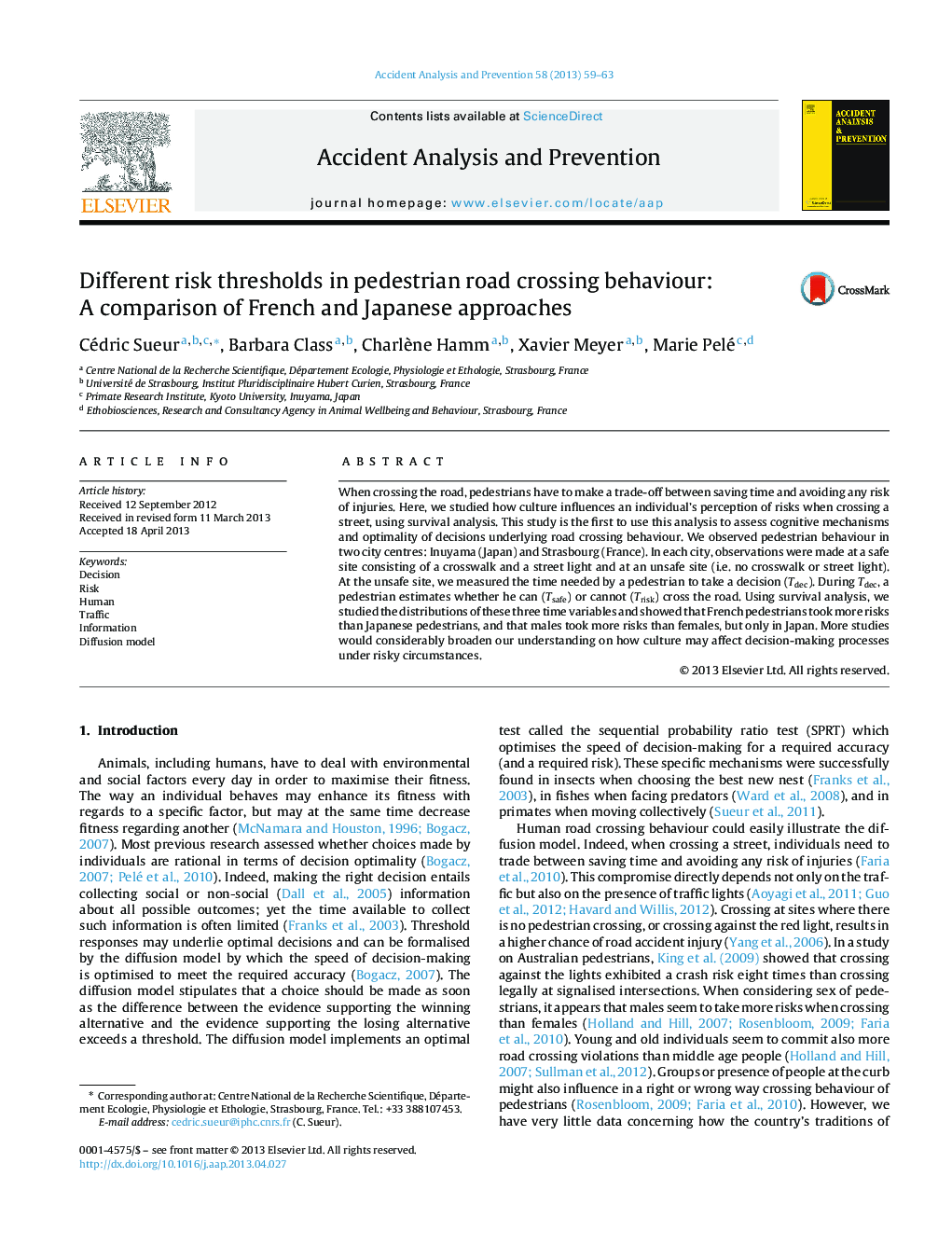| Article ID | Journal | Published Year | Pages | File Type |
|---|---|---|---|---|
| 6966135 | Accident Analysis & Prevention | 2013 | 5 Pages |
Abstract
When crossing the road, pedestrians have to make a trade-off between saving time and avoiding any risk of injuries. Here, we studied how culture influences an individual's perception of risks when crossing a street, using survival analysis. This study is the first to use this analysis to assess cognitive mechanisms and optimality of decisions underlying road crossing behaviour. We observed pedestrian behaviour in two city centres: Inuyama (Japan) and Strasbourg (France). In each city, observations were made at a safe site consisting of a crosswalk and a street light and at an unsafe site (i.e. no crosswalk or street light). At the unsafe site, we measured the time needed by a pedestrian to take a decision (Tdec). During Tdec, a pedestrian estimates whether he can (Tsafe) or cannot (Trisk) cross the road. Using survival analysis, we studied the distributions of these three time variables and showed that French pedestrians took more risks than Japanese pedestrians, and that males took more risks than females, but only in Japan. More studies would considerably broaden our understanding on how culture may affect decision-making processes under risky circumstances.
Related Topics
Physical Sciences and Engineering
Chemical Engineering
Chemical Health and Safety
Authors
Cédric Sueur, Barbara Class, Charlène Hamm, Xavier Meyer, Marie Pelé,
